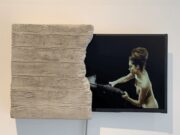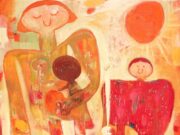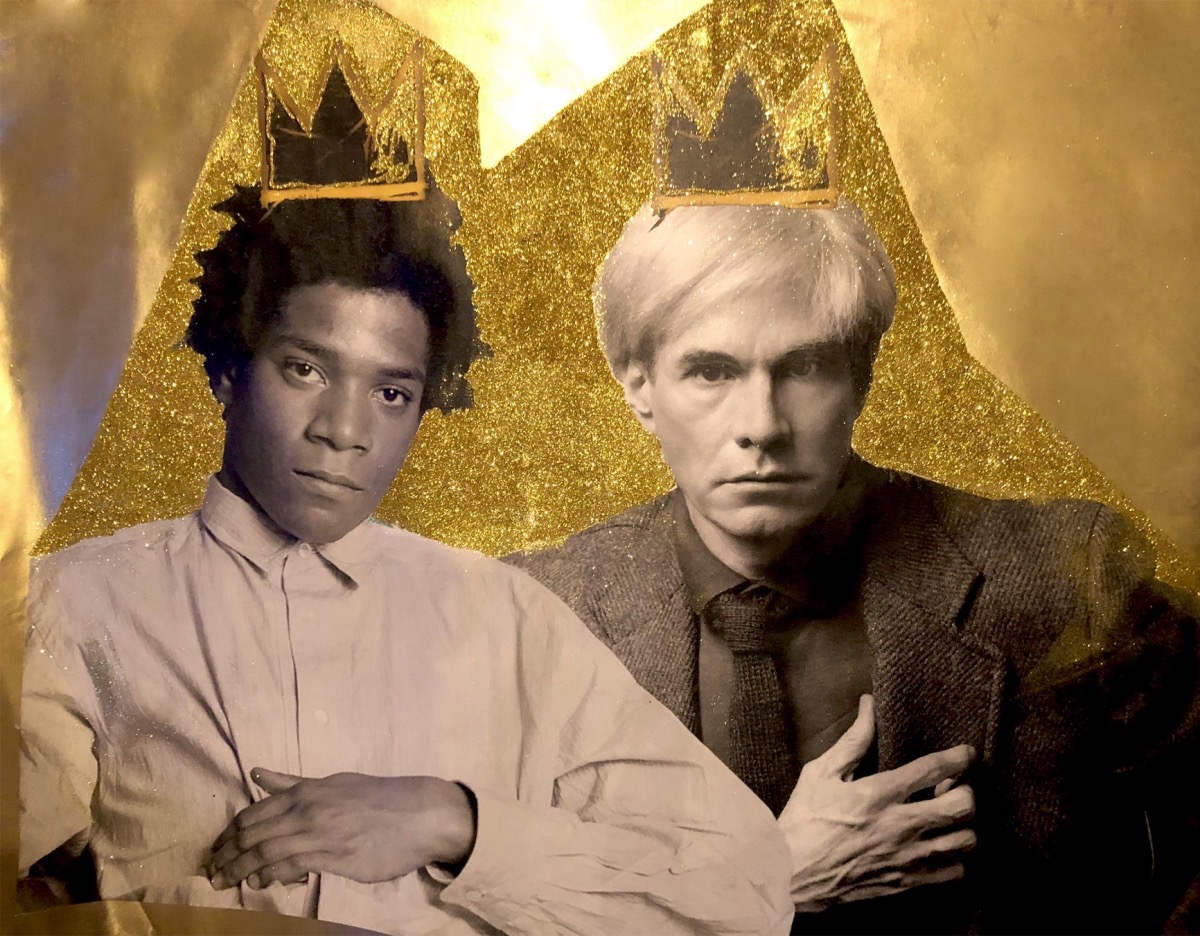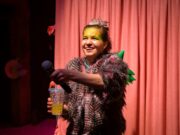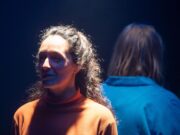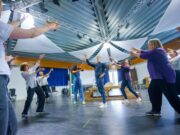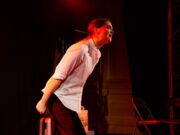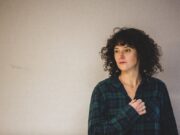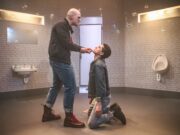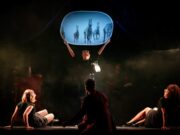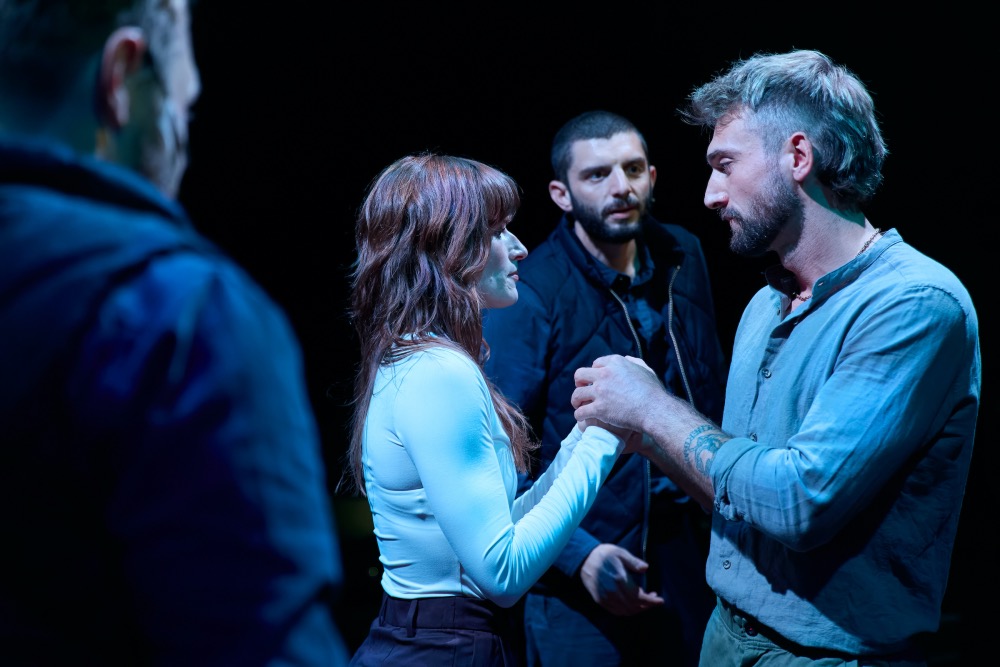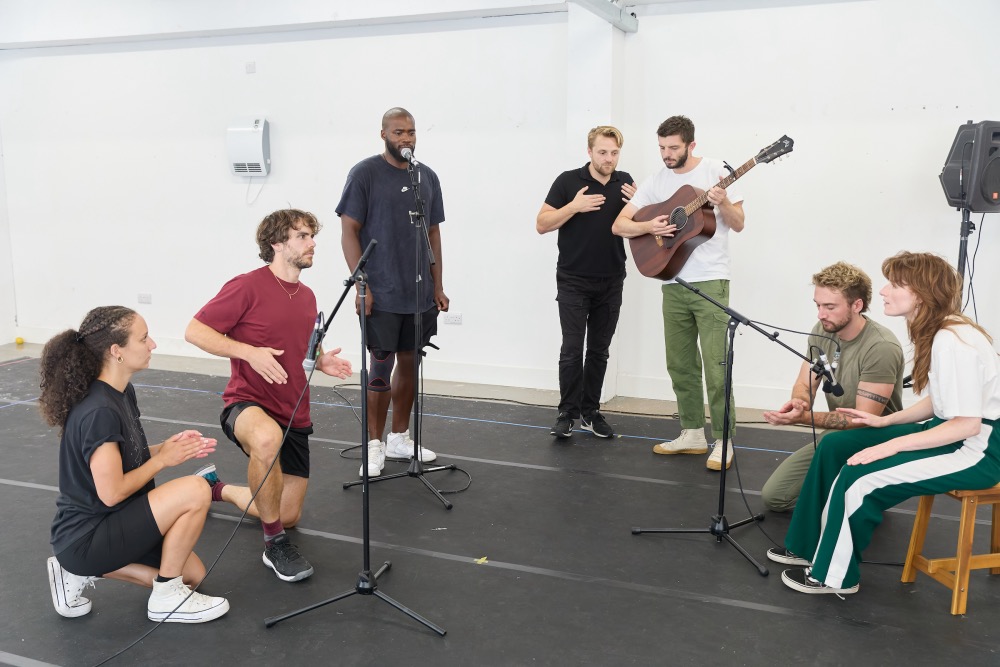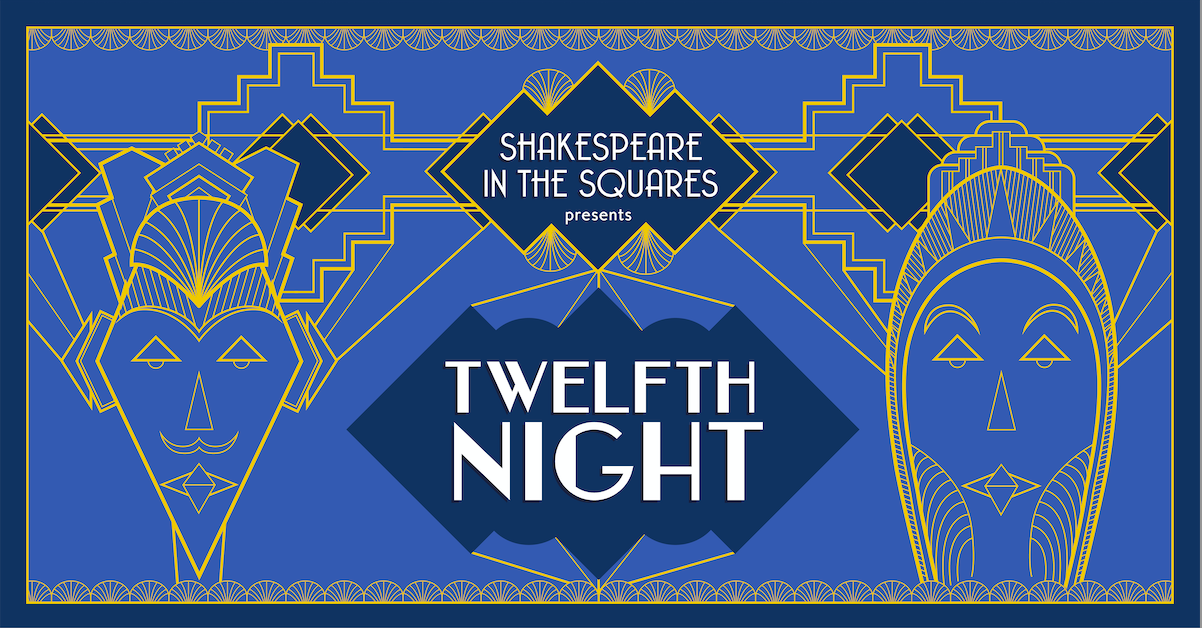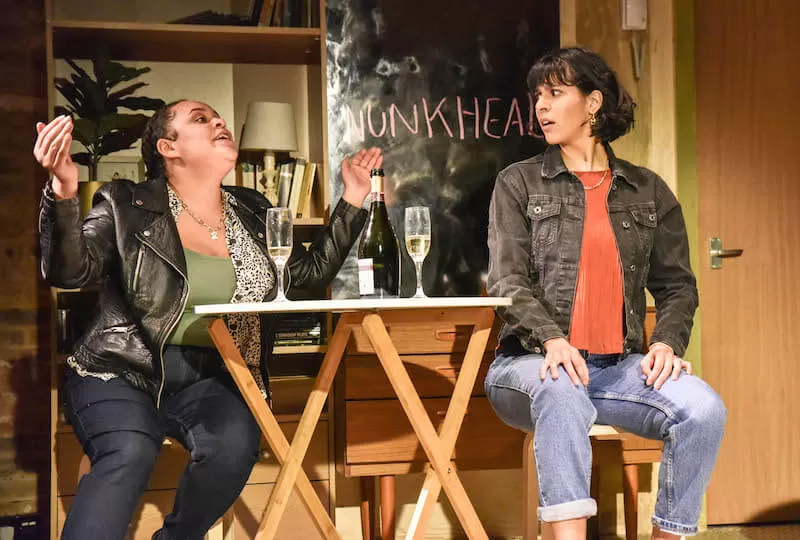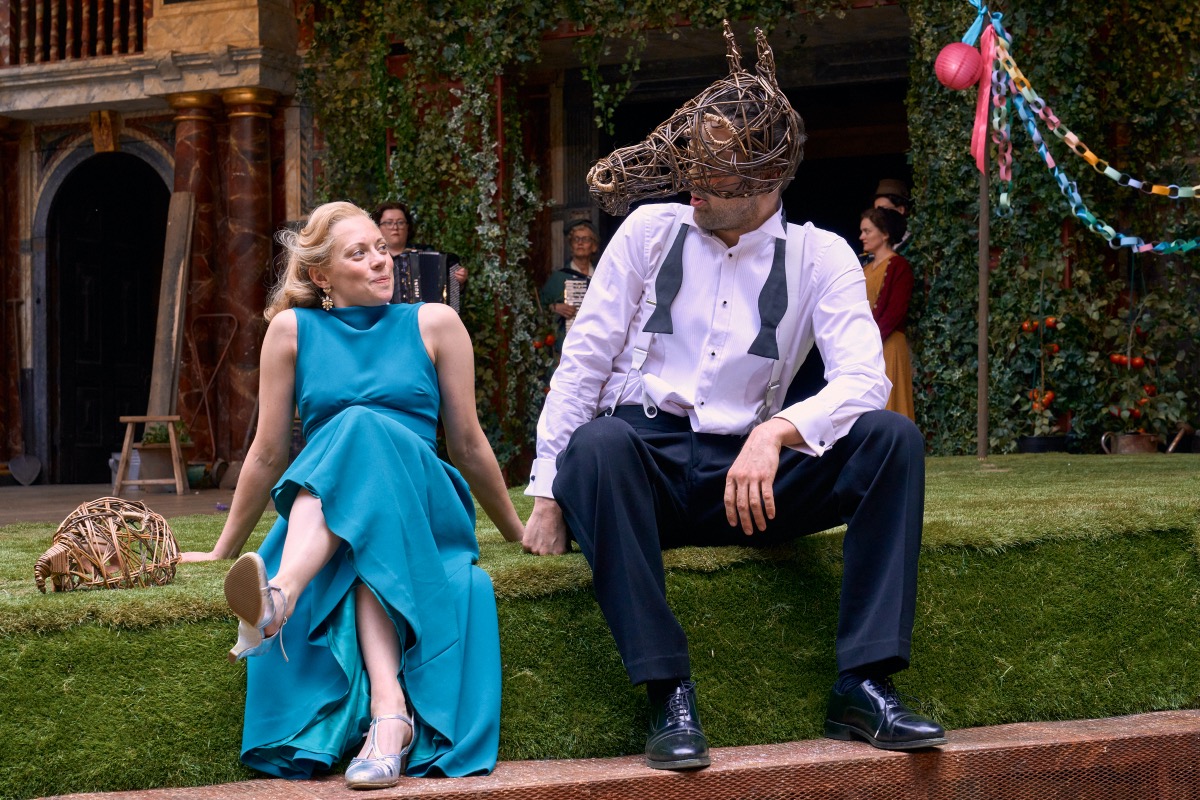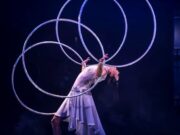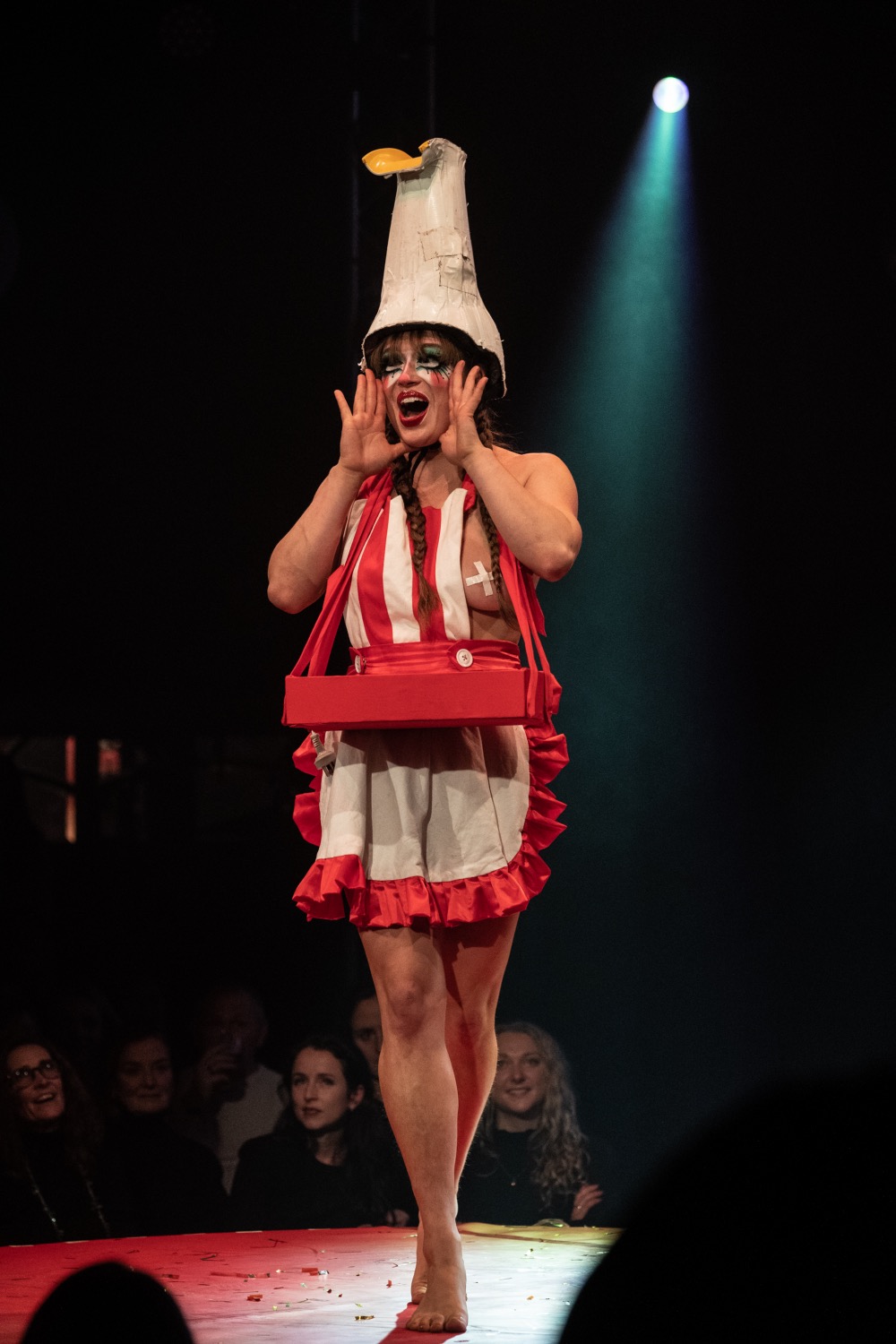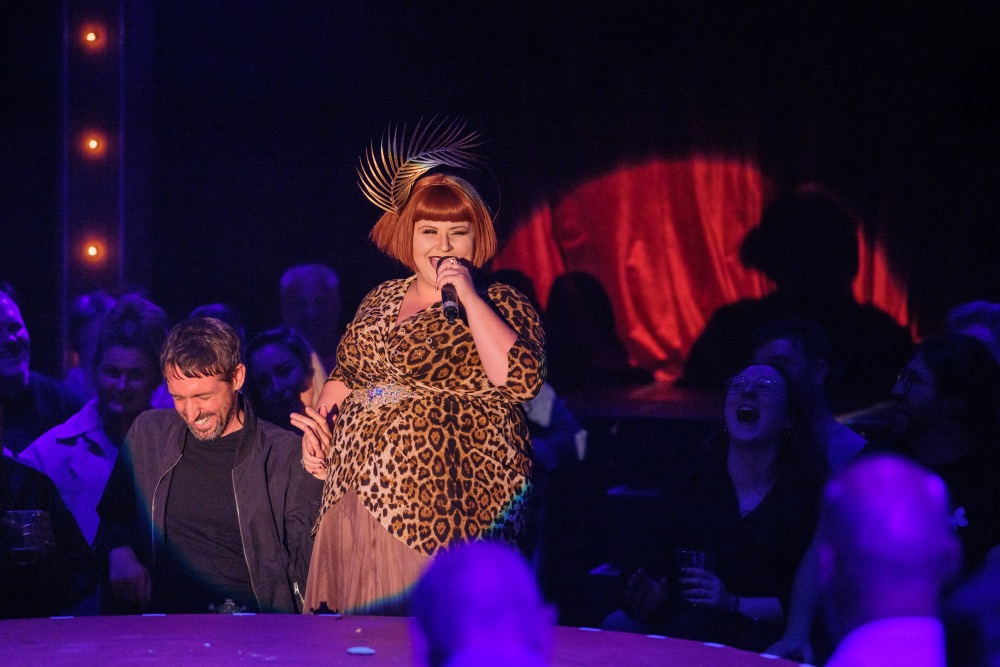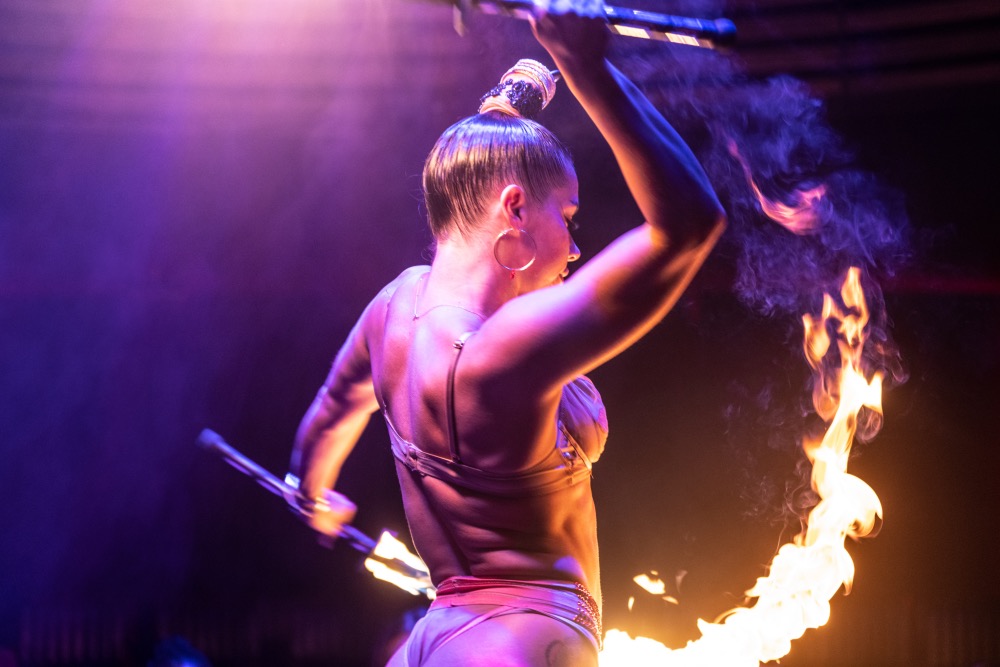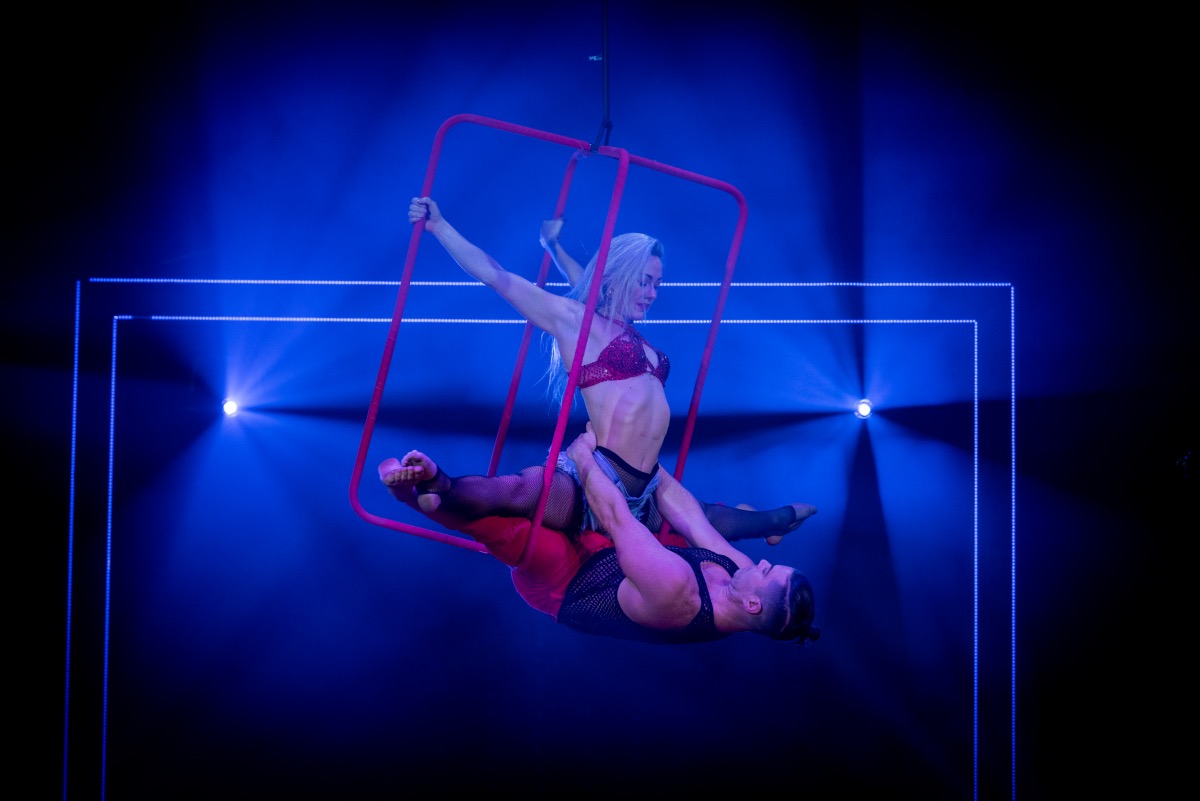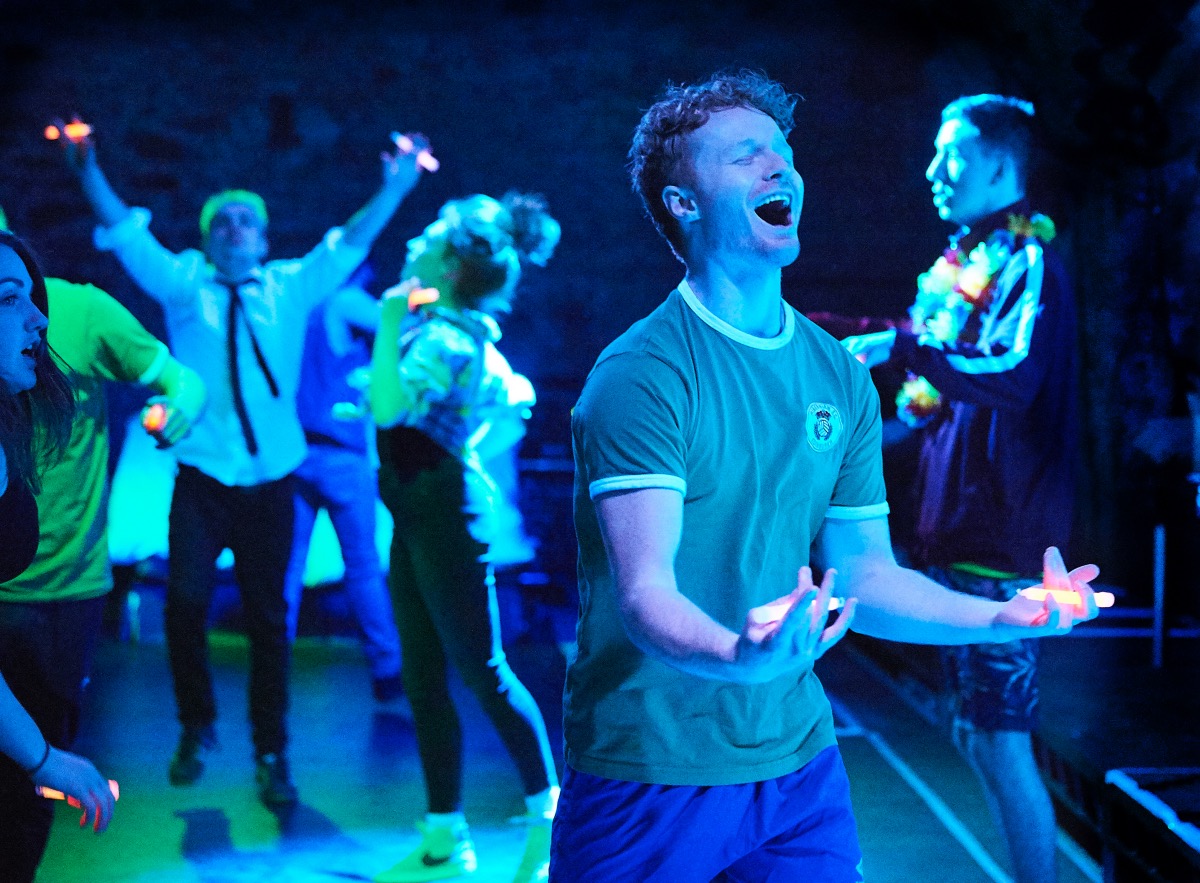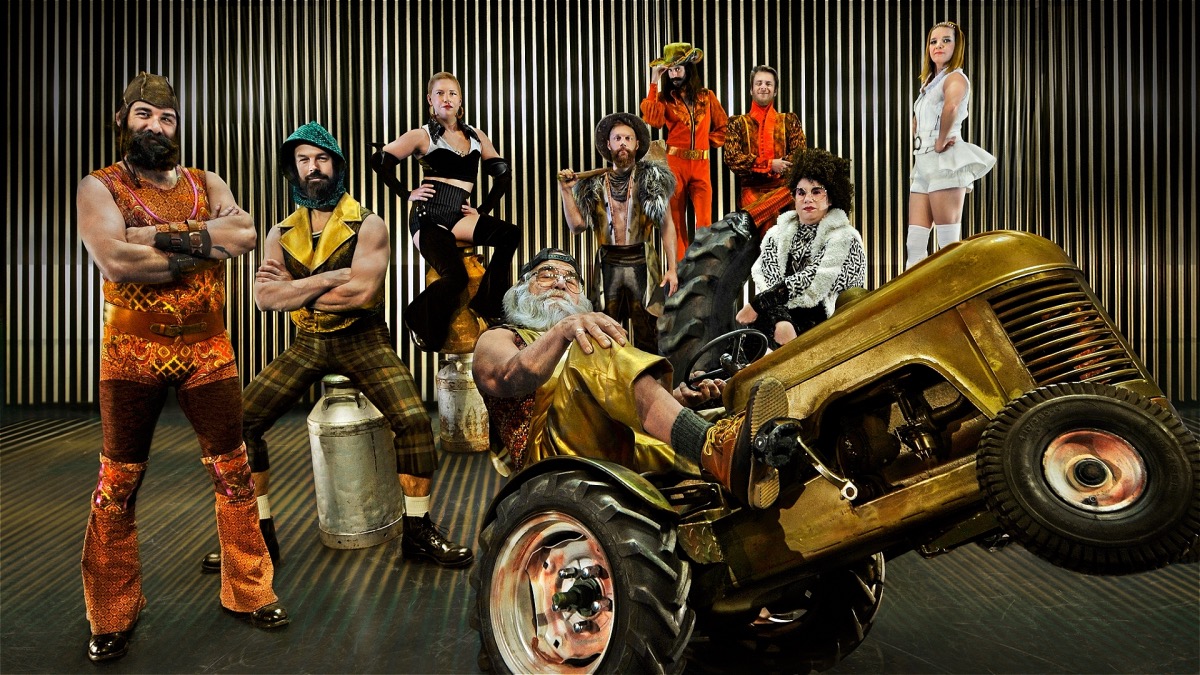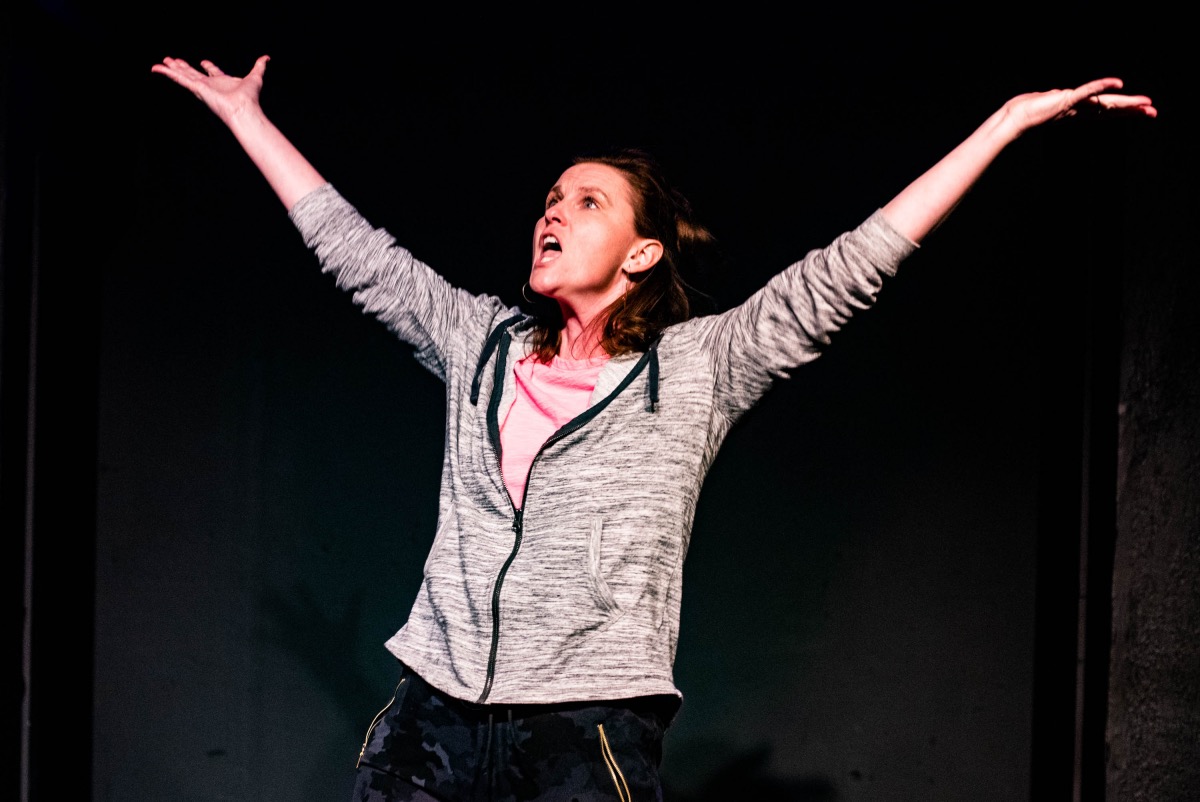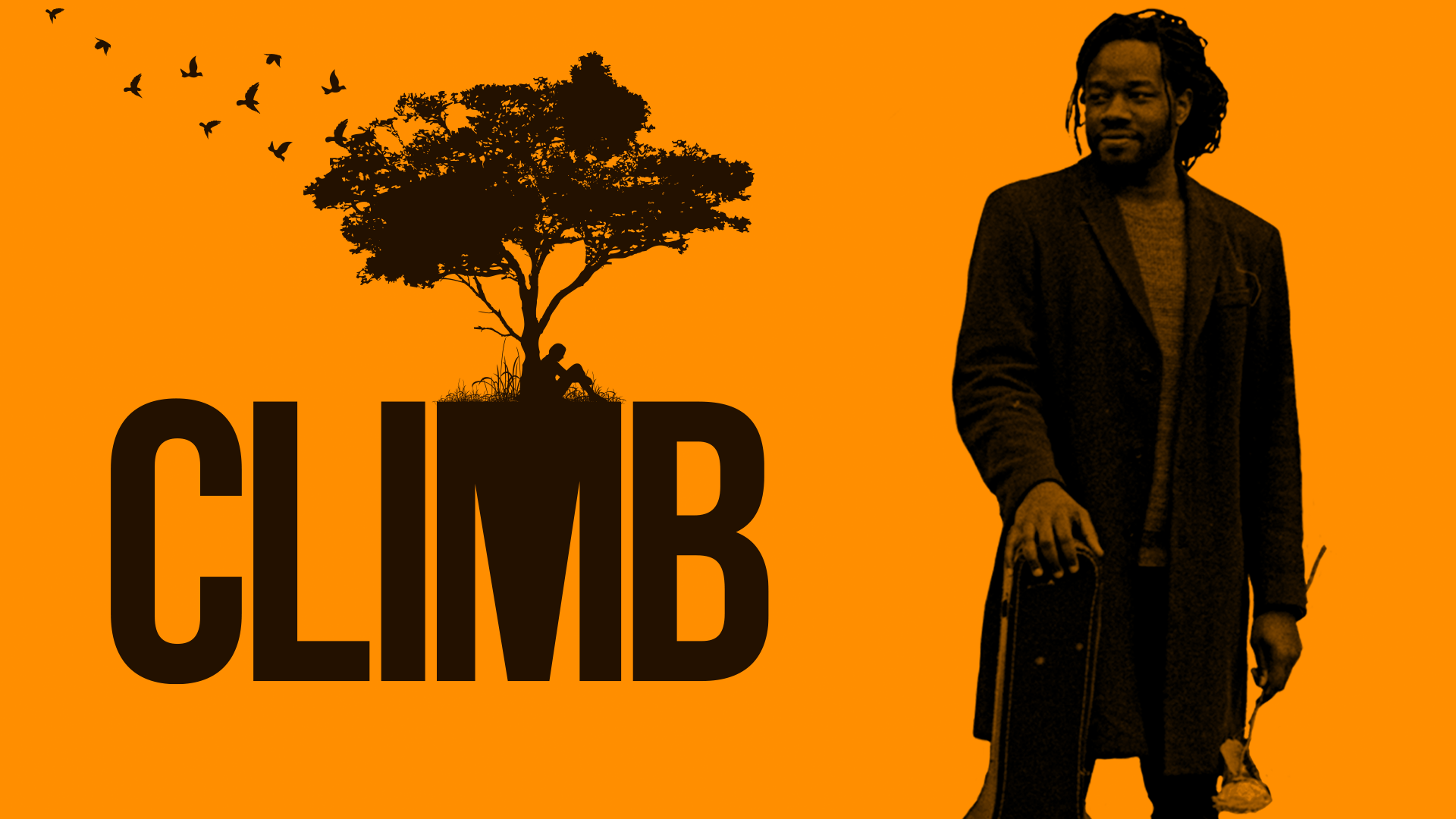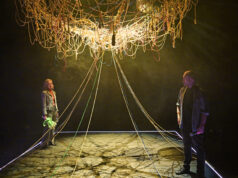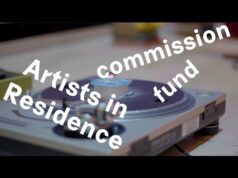Created by Australian artists Projection Teknik and presented by London Borough of Wandsworth and London Borough of Lambeth, the installation will be a daisy-chain of high-density light beams illuminating the two new stations and painting the route of the tunnels in the sky. Buildings along the route will be lit up with projections and accompanied by soundscapes recorded with local community groups.
From 6.30pm–10pm Friday 29th and Saturday 30th October 2021, Line of Light will run between Battersea Power Station, Nine Elms station and Kennington station.
The Artiscape spoke to Sam Jones about the the Installation – Line of Light:
What inspired you to do this?
Jones: I’ve spent a lot of time travelling around East and West Africa, meeting artists and musicians from a lot of different cultures. I love telling stories, but through audio and through sound. I love blending different organic elements of music and of soundscapes together.
Jones tells us she has “worked quite extensively” with local authorities in the past few years – (with the Borough of Culture in Waltham Forest. Extended work includes, work with various different communities that live in Waltham Forest).
Jones: Telling the stories of the people who live and work in the area of the extension of the Northern Line, and being able to look around the place and understand, or try to begin to understand, who lives and works here, and be able to tell their stories through spoken word and poetry, but also working with local musicians to illuminate that.
We’ve been working with a local string arranger, who grew up in the local area (Emma Smith). She’s created these wonderful string arrangements, which compliment the various different stories and poems which have been told and spoken.
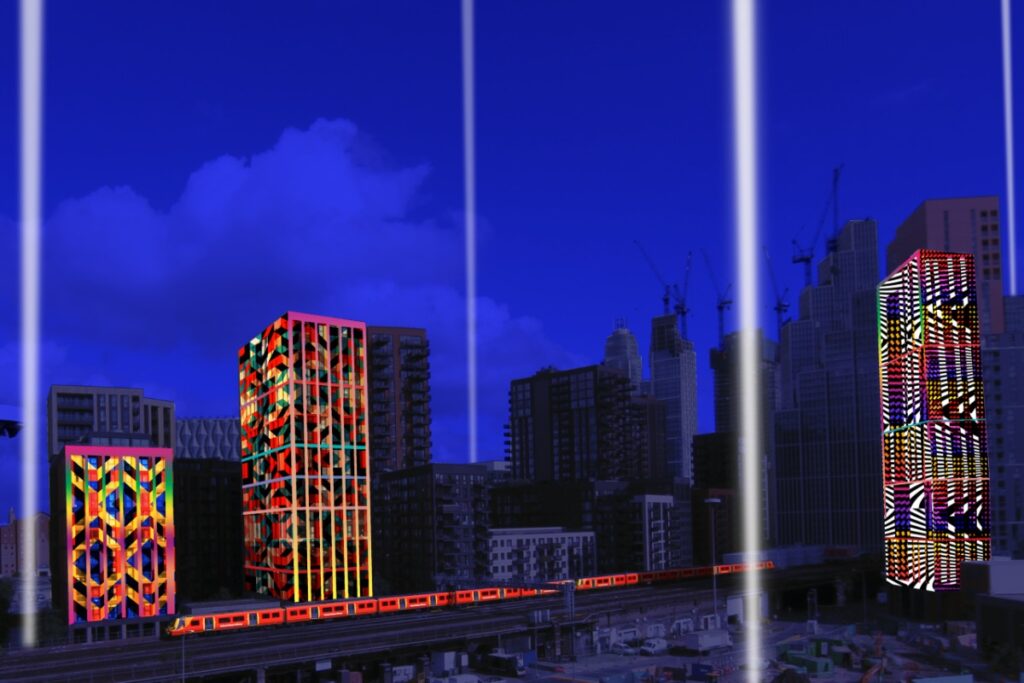
Jones tells us about working with a percussionist (Xande Oliveria), a trumpeter (Simon Finch, from the Barmy Army, who plays regularly at the Oval Cricket Ground), Rakesh Patel (who plays for the Bharat Army (again at the Cricket Ground).
Jones: We’ve also worked very closely with Battersea Power Station Community Choir, with Guido Spannocchi, who is an amazing Saxophonist, and his friend James Larter, who are neighbours and live just around the corner from Nine Elms station.
Working very closely with primary schools – St Stevens Primary School and Griffin Primary School, and the wonderful Triangle Adventure Playground. Gabriel (who works there) has been amazing.
We’ve tried to illuminate some of the soundscapes within young peoples’ thoughts and minds and experiences.
Just the general people that we’ve met on the street – so, people from the library, friends groups, laundrette users, restaurant attendees, people who do not have a home, people who remember the complexities of the place changing through gentrification or through new people coming to town.
We’ve got some pieces which are talking about the sky, and that’s juxtaposed by stories from people that use the local homeless shelter – talking about the disparity of those that have and those that have not.
This is a festival, a space for celebration. We have been trying to have an overall positive and optimistic tone throughout the whole recording.
We are not wanting to wash over the complexity of people’s lament of change, but ultimately, the overarching feeling is that these developments are a really good thing for the area, so that’s been really exciting to work with. This is what draws me to the project, being able to work with sound, musicians, ‘found sound’, atmospheres, ambiences, and put these together into a variety of different soundscapes.
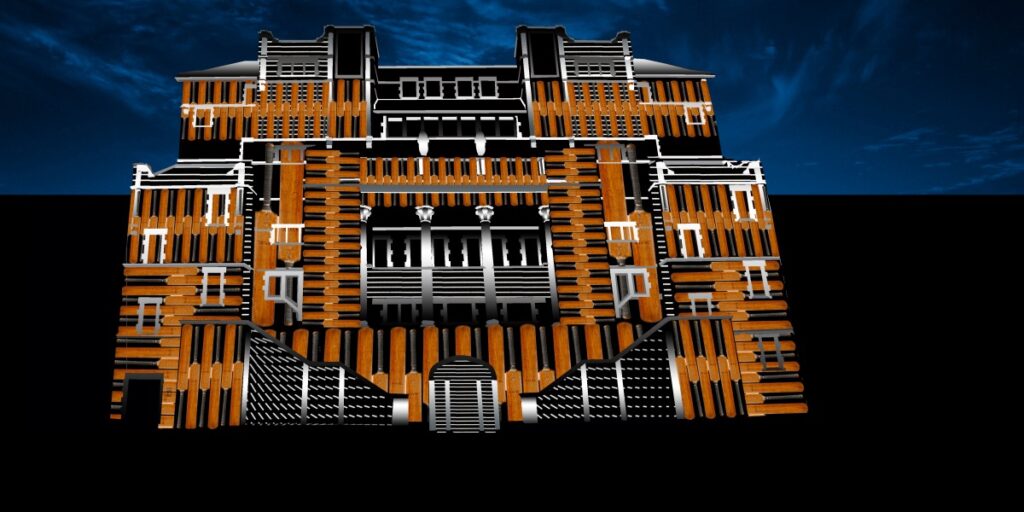
You have been collecting stories and recordings, what have you found interesting in the stories you have recorded?
Jones: There are many really fantastic stories.
There is an old gentleman, Frank, who I spoke to at Ashmore estate by the Fentiman Arms, who told me about his experiences of the local area, having previously lived on the street, met his wife and been married for 35 years.
Stories of the budgies that he’s kept and the goldfish that he’s kept, and how the budgies flew around the building – these wonderful insights into people’s lives have been immensely heart-warming.
There was one gentleman I spoke to, who sings for the Battersea Power Station Community Choir, and he was looking at when the power station was originally instated, and that was the year he was born. He was saying that the power station is the same age that he is. An incredibly poignant memory. Wonderful stories and poems from primary school. Also, wonderful stories from people in the street about the Portuguese community in ‘Little Portugal’.
The best story though, the one that sticks in my mind for quite a long time, is one participant from the Battersea Power Station Community Choir. She talked about when she was young, crossing one of the bridges, and their mother or father pointing out Battersea Power Station to them, and said “Look over there, that’s where clouds are made”.
It’s just wonderful, the cloud making machine of London. It’s things like that that will stick with me for a very long time.
What were the challenges you found in this undertaking?
Jones: These kinds of projects, for me, take years to do properly – months at least. We had weeks. That was just the nature of the project.
We rose to the challenge – the team have done an amazing job. We were keen that this project was embedded into the community, so I spent a lot of time playing catch-up and meeting lots of people – just being in the area and wandering around the streets, having conversations (some of which I record, some of which I do not), and just taking the time and making the space to have these conversations. In an ideal world, they would have taken months, to build trust and be able to tell a real story.
But, through wonderful partnerships with the Battersea Power Station, the local library, the friends groups, the schools, and Wandsworth Council, we’ve been able to have open up these different pockets of society, which only open themselves up after quite a few months and years of developing relationships. Wandsworth Council have been immensely helpful in this, as well as originating the festival and pulling together all the strands of people and places and making new connections to celebrate the new Tube route.
So that was a challenge, to do this is such a way that is authentic in a moment of expediential change for the local area. It was a challenge to gain that trust in such a short amount of time, so we could do service to the local community in a respectful way.
What did you hope to achieve with this project?
Jones: We really wanted to achieve an authentic representation of people who live and work in the area, and tell a story which is transparent and celebratory, of course, because it’s a festival. But it was never really about me as a producer, it was just very much trying to reflect the multiplicity of different people in different genres of music and the variety of sounds in the local vicinity. We wanted to create a coherency around that. The 11 pieces are quite different, but they attempt to have a running thread of curiosity – so for people who will listen to this stuff, we hope it will begin to go some way to illuminate the amazing depth that I’ve found working throughout these various different locations.
What have you enjoyed in the process?
Jones: I enjoyed meeting people. I enjoyed talking to people. It can be very strange, just stopping people in the street and asking them questions because I wasn’t trying to sell anything. We’re literally just trying to tell stories, and I love that. There’s no agenda.
Some people very much embraced that ambiguity and some people balked at it. I was just very transparent with people and tried to ask them some questions that try to inspire some thoughts. It’s amazing, the responses. I’m always amazed at some of the ‘ordinary’ things in people’s lives – it’s really in the delivery, as people start to unpack their own lives. It’s an honour to be on the receiving end of that, and then work with immensely talented musicians and producers to knit this into something which is artistic.
Something else I’ve really enjoyed with this project is working with the Royal College of Art. They have a degree programme called ‘Digital Directions’. The students, are on the Masters programme, and are learning about digital storytelling, so this was a perfect collaboration with the university.
We took the students around the various different locations, and they were very much involved with talking to the general public and using ambisonic microphones (which are 3-D microphones and are some of the very best in recording equipment). So there was very much the knowledge transfer happening with the students who were concurrently running their own projects for their degree.
What can an audience expect to get from these installations?
Jones: Well the point of the soundscapes is that they are in reaction to the projections made by an amazing artist Nick Azidis.
The team has put together these wonderful patterned collages, and mapped out the buildings in such a way that the projection work in a reactive way around the various different facades.
I’m really looking forward to seeing the Battersea Power Station, just because of its immense size. An audience should expect to see a celebration.
There is a lot of light – some of it based of slides, some based on video projection – but the whole multisensory experience of it is that you have headphones on and listen to the pieces of music or soundscapes that we have put together, and that they correspond to the visual exemplification of those spaces.
nineelmslondon.com | T: @nineelmsteam | Insta:@nineelmslondon |facebook.com/nineelmslondon|#LineOfLight


